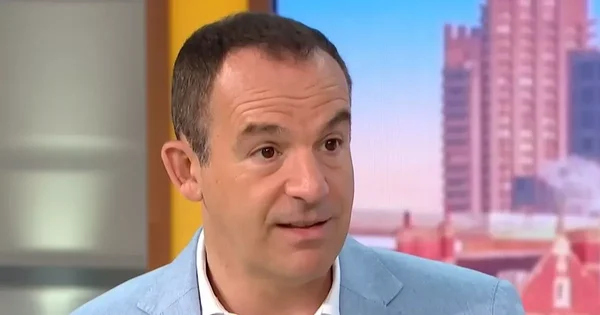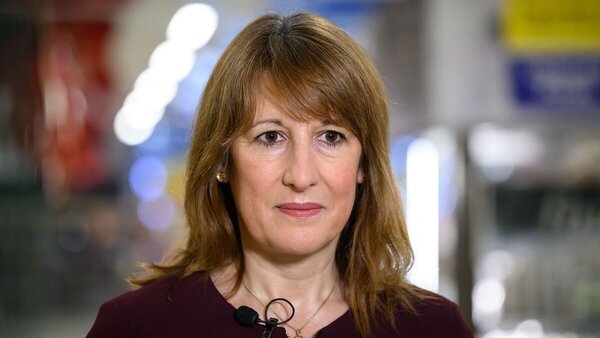Can You Get Sick Pay When Self Employed? Your Options Explained
Got a nasty flu and wondering if you’ll get paid for the week you’re stuck in bed? Here’s the brutal truth that catches every new freelancer off-guard - self-employed people don’t get sick pay. At all.
While employees automatically receive Statutory Sick Pay from their fourth day off work, self-employed people get precisely nothing unless they’ve arranged protection themselves in advance.
I’ve watched countless self-employed clients realise this harsh reality only when illness actually hits. When you fall ill as a self-employed person, there’s no automatic safety net to catch you.
One week off sick might mean no mortgage payment, missed bills, or dipping into savings you’d earmarked for tax. This kind of financial pressure can quickly build up, making it even harder to recover and get back to work. Let me walk you through why sick pay doesn’t exist for the self-employed, and what you can do about it.
The trade-off for business independence is personal responsibility for income protection. If you run your own business, falling ill means you alone must manage the unique challenges of keeping things afloat during sickness.
Why Self-Employed People Don't Get Statutory Sick Pay
Statutory Sick Pay (SSP) is an employment entitlement funded by employers. When you’re self-employed, you don’t have an employer - you are the employer, which means there’s nobody obligated to pay you when illness stops your work.
The government designed SSP specifically for employees as part of employment protection rights. An employment contract is required to claim SSP, which sole traders and self employed sole traders do not have. Self-employed status deliberately sits outside this framework because you have business flexibility that employees don’t enjoy.
Key differences:
- Employees get SSP (£109.40 weekly for 2024-25) from day 4 of sickness
- Sole traders and self employed sole traders cannot claim statutory sick pay or claim SSP, as they are not eligible under the scheme
- Self-employed people get nothing automatically, regardless of illness duration
- No entitlement even if you’ve paid decades of National Insurance contributions
- Even serious illness requiring months off work doesn’t trigger automatic payments
This isn’t an oversight or loophole - it’s fundamental to how self-employment works in the UK tax and employment system. The trade-off for business independence is personal responsibility for income protection.
I remember my first proper bout of flu after going self-employed. Three weeks of missed work meant zero income while my expenses kept rolling. That’s when the reality of no sick pay really hit home.

The Limited Company Exception: Can You Pay Yourself SSP?
There’s one technical exception where self-employed people might access SSP - if you operate through a limited company and employ yourself on PAYE, you might qualify for SSP from your own company. This applies to limited company directors, as they are considered employees of their own companies for SSP purposes.
However, this arrangement has significant complications that make it impractical for most self-employed people. This is especially true for company directors, who often structure their pay to minimise tax and National Insurance.
Limited company SSP requirements:
- Must pay yourself through PAYE as a director/employee
- Need to earn at least £123 weekly through PAYE (not dividends)
- Must earn an average salary above the SSP threshold to qualify
- Non working days (such as weekends or scheduled days off) count towards the four or more consecutive days needed to qualify for SSP
- Company must pay employer’s National Insurance on your PAYE salary
- SSP payment comes from company funds (ultimately your own money)
- Complex administration for relatively small benefit
If you have been sick in the last eight weeks, this can affect your SSP eligibility and payment calculations.
Most self-employed people using limited companies pay themselves minimal PAYE salary plus dividends to minimise National Insurance. This strategy specifically avoids the earnings threshold needed for SSP.
Even when you technically qualify, you’re paying yourself sick pay from your own company funds - it’s not external support like employees receive. You’re essentially paying yourself to be off sick, which only works if your company has sufficient cash reserves. As a limited company director, you must meet all SSP criteria to be eligible.
Alternative Income Protection Options for Self-Employed People
Since statutory sick pay doesn’t exist for self-employed people, you need to arrange your own protection. Several options provide varying levels of coverage depending on your budget and risk tolerance.
Income protection insurance: Private insurance replacing 50-70% of income during illness. This type of coverage is also known as sick pay insurance, providing financial support if you can't work due to illness or injury. Most comprehensive option but costs £30-150+ monthly depending on age, health, and coverage level. These policies typically provide a monthly payment to help maintain your income. Insurance payouts can help cover essential expenses such as mortgage payments and living costs during periods when you are unable to work.
Critical illness cover: Pays lump sum on diagnosis of specific serious illnesses. Cheaper than income protection but only covers defined conditions, not general illness.
Accident and sickness insurance: Simplified policies covering accidents and specific illnesses. More affordable but often with significant limitations and exclusions.
Self-insurance through savings: Building 3-6 months of living expenses as an emergency fund. Free but requires discipline and substantial savings to be effective. Financial protection is especially important for those running a self employed business, as income can be unpredictable.
Many self-employed people combine approaches - perhaps income protection for serious long-term illness plus savings for short-term sickness. This balances cost against comprehensive coverage. Small business owners may find this combination particularly useful to ensure ongoing financial stability.

Building Your Own Sick Pay Fund
The DIY approach to sick pay protection involves systematically building savings specifically for illness or injury. While less exciting than spending business profits, it provides genuine financial security. By choosing to plan ahead, you ensure you’re prepared for illness and unexpected disruptions.
Building a sick pay fund:
- Calculate 3-6 months of essential living expenses
- Set aside 5-10% of business income monthly until fund reaches target
- Keep funds separate from working capital in dedicated savings
- Only use for genuine illness/injury that prevents working
- Replenish after any withdrawals
A freelancer with £2,000 monthly essential expenses needs £6,000-12,000 in their sick pay fund. At £200 monthly savings, this takes 2.5-5 years to build - a long commitment but invaluable when needed.
The challenge is maintaining discipline when the fund exists. It’s tempting to raid it for business expenses, equipment, or holidays, but doing so defeats its purpose.
I’ve had clients whose sick pay funds literally saved their homes during serious illnesses. The time and discipline to build the fund seemed tedious at the time, but proved essential when they couldn’t work for months. Having a sick pay fund made a huge difference in their financial stability and peace of mind during difficult times.
Government Benefits When Self-Employed People Are Too Ill to Work
While there's no sick pay, self-employed people can claim means-tested benefits when illness prevents work. These don't replace income quickly or completely, but provide crucial support during extended illness.
Universal Credit: The main benefit for self-employed people unable to work through illness. Means-tested based on income, savings, and circumstances. Includes additional "limited capability for work" element if you pass the Work Capability Assessment.
New Style Employment and Support Allowance: Contribution-based benefit depending on your National Insurance payment history. Up to £128.89 weekly if you meet contribution requirements and can't work.
Personal Independence Payment: For long-term health conditions or disabilities affecting daily living or mobility. Not means-tested but requires significant impact on daily activities.
These benefits take weeks or months to start, require complex applications, and don't match your previous self-employed income. They're safety nets for serious situations, not replacements for short-term sick pay.

How Much Sick Leave Can You Actually Afford?
Understanding your financial runway during illness helps you plan protection levels appropriately. Many self-employed people don’t realise how quickly illness can drain resources.
Calculating your sick leave affordability:
- List all fixed monthly expenses (mortgage/rent, bills, insurances, etc.)
- Add essential variable expenses (food, transport, minimum business costs)
- Subtract any partner’s income if applicable
- Divide available savings by this monthly requirement
It's important to compare your monthly income to your total monthly expenses to understand how much of your regular income you would need to replace during illness.
A self-employed person with £4,000 in savings and £2,000 monthly expenses can afford 2 months off work - less if unexpected costs arise during illness.
This calculation excludes non-essential spending and assumes you can immediately stop all discretionary business expenses. Reality often provides less flexibility than theoretical calculations suggest.
For comprehensive guidance on managing self-employed finances during challenging periods, our detailed guide covers strategies for maintaining financial stability.
Short-Term vs Long-Term Illness: Different Approaches
Financial strategies for managing illness should differentiate between short-term bugs and serious long-term conditions. Each requires different planning and protection.
Short-term illness (under 4 weeks):
- Savings buffer usually most practical approach
- As there is no statutory sick pay for the self, self-employed people must arrange their own sick pay or financial support during illness
- Work rescheduling can sometimes minimise income impact
- Pushing through minor illness (when safe) might be necessary
- Building relationships with backup contractors who can cover urgent work
Long-term illness (over 4 weeks):
- Income protection insurance becomes crucial
- Universal Credit and ESA claims become relevant
- Business continuity planning matters more
- May need to formally pause or close business
The distinction matters for insurance too. Income protection policies typically have “deferred periods” (4 52 weeks) before payments start, specifically designed for longer-term illness rather than week-long flus.

The Self-Employed Sick Pay Debate and Political Discussions
There’s ongoing political debate about whether self-employed people should receive some form of statutory sick pay, particularly highlighted during the COVID-19 pandemic.
During COVID, the government introduced Self-Employment Income Support Scheme (SEISS) grants specifically because existing systems provided no sick pay protection. This temporary measure demonstrated both the need and the political challenges of creating permanent solutions.
Arguments for self-employed sick pay:
- Prevents illness spreading when people work while sick
- Recognises self-employed people pay National Insurance contributions
- Reduces Universal Credit burden during illness
- Provides basic security in modern gig economy
Arguments against:
- Complexity of verifying genuine self-employed illness
- Potential for abuse given self-certification possibilities
- Self-employed people already enjoy tax advantages
- Difficult to calculate appropriate payment rates for variable incomes
Self-employed people are not eligible for statutory paternity pay, which is only available to employees. There are also no paternity benefits provided by the government for self-employed individuals, so they cannot claim paternity benefits in the same way as employees. However, self employed maternity pay is available through Maternity Allowance if eligibility criteria are met.
While debate continues, no immediate changes seem likely. Self-employed people must currently plan for income protection themselves rather than expecting government intervention.
Practical Strategies for Managing Illness as Self-Employed
Beyond formal insurance and savings, practical strategies can minimise the financial impact of illness when you’re self-employed.
Preventive approaches:
- Maintain flexible client deadlines allowing illness buffer
- Build relationships with backup contractors for emergencies
- Create passive or semi-passive income streams when possible
- Keep emergency work-from-bed options for minor illness
Reactive approaches:
- Communicate early with clients about delays
- Negotiate extended deadlines rather than cancelling projects
- Consider delivering reduced-scope work rather than nothing. If you need to claim benefits like ESA, preparing documentation and evidence in advance can help with the assessment process, where you must demonstrate your inability to work due to health issues.
- Prioritise highest-value clients during limited working capacity
Some freelancers maintain “illness clauses” in contracts specifying how sickness affects deadlines and deliverables. While not providing income, these clauses protect client relationships and future work.

Insurance Policy Considerations and Pitfalls
If choosing income protection or illness insurance, understanding the fine print prevents nasty surprises when claiming. Many policies have limitations that make them less useful than expected.
Key policy factors:
- Definition of “unable to work” (own occupation vs any occupation)
- Exclusions for pre-existing conditions
- Mental health coverage and limitations
- Waiting periods before coverage starts
- Deferred periods before payments begin
- Three day waiting period, which is common in insurance and SSP policies as the initial period before payments start
The “own occupation” vs “any occupation” distinction is crucial. Own occupation covers you if you can’t do your specific work. Any occupation only pays if you literally can’t do any work at all - much harder to claim.
Pre-existing condition exclusions often apply indefinitely for those conditions. If you’ve ever had back problems, back injuries might never be covered regardless of how long you hold the policy.
I’ve seen clients devastated when mental health claims were rejected because their policies had 24-month exclusion periods for stress-related absence, despite paying premiums for years.
Final Thoughts
Self-employed people don't get sick pay, and this fundamental difference from employment requires active planning and protection. Whether through insurance, savings, or benefit awareness, you need strategies in place before illness strikes.
The lack of sick pay is probably the single biggest financial vulnerability in self-employment, but it's entirely manageable with appropriate preparation. Don't wait until you're ill to think about this - by then it's too late to arrange protection. Our free self-assessment app helps you track your business finances and build the financial resilience you need to weather illness or injury periods.











